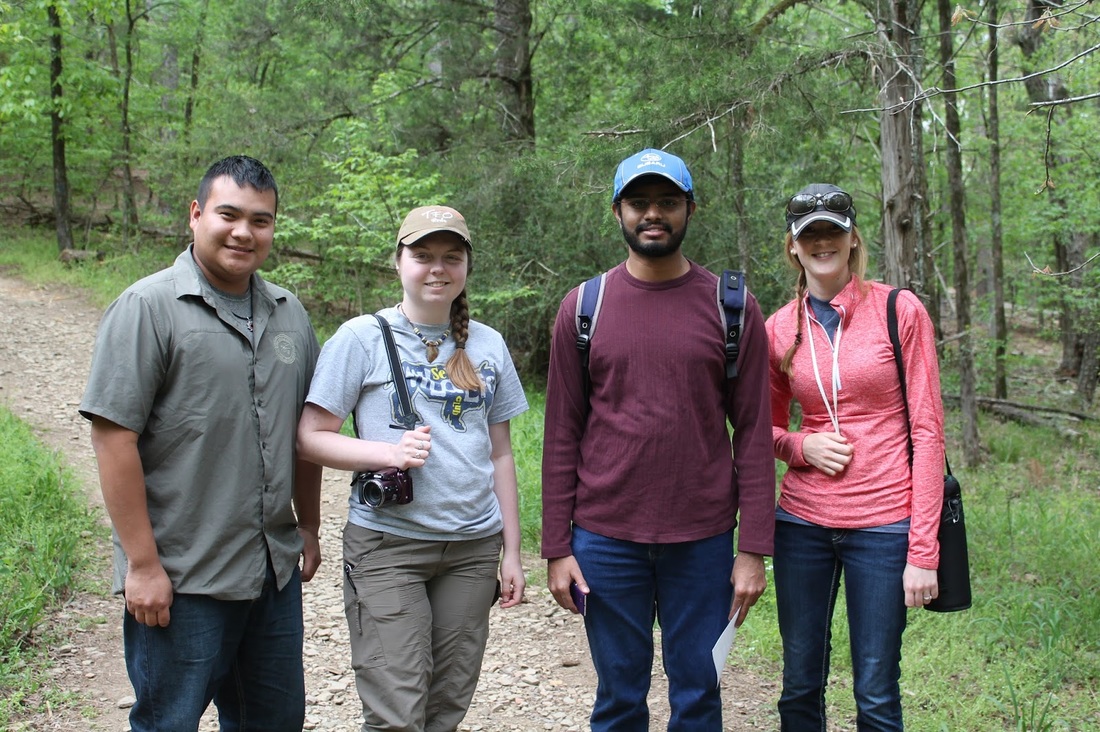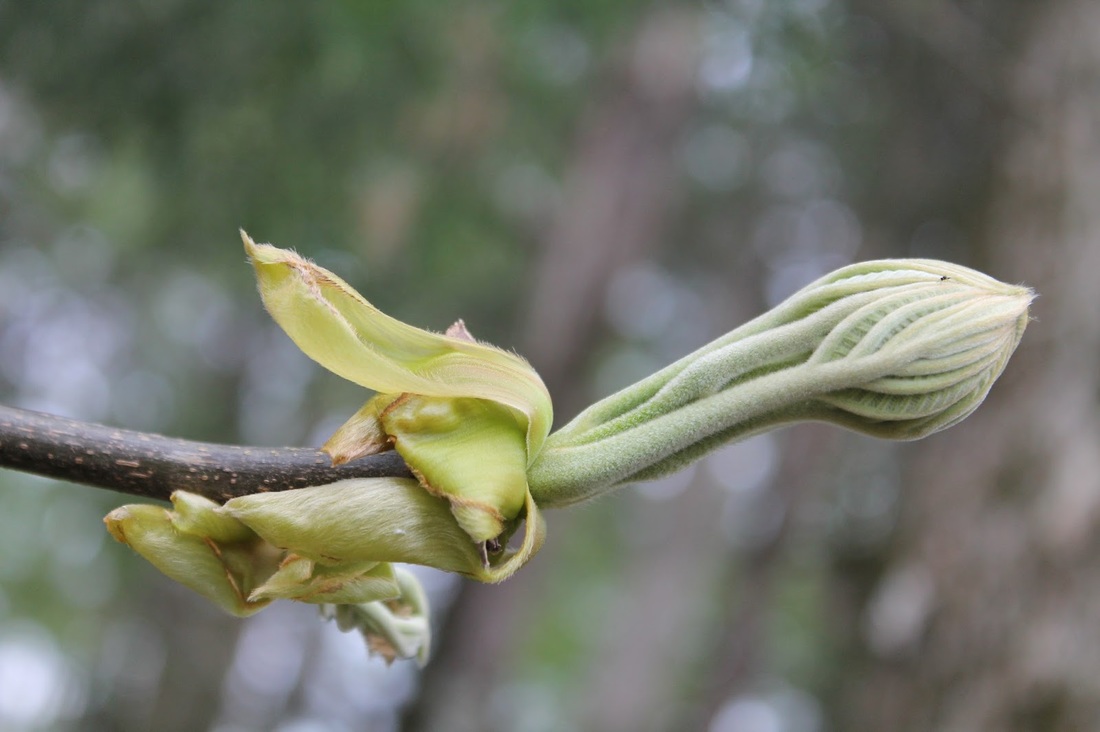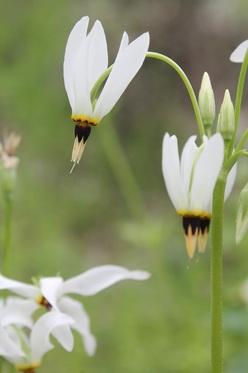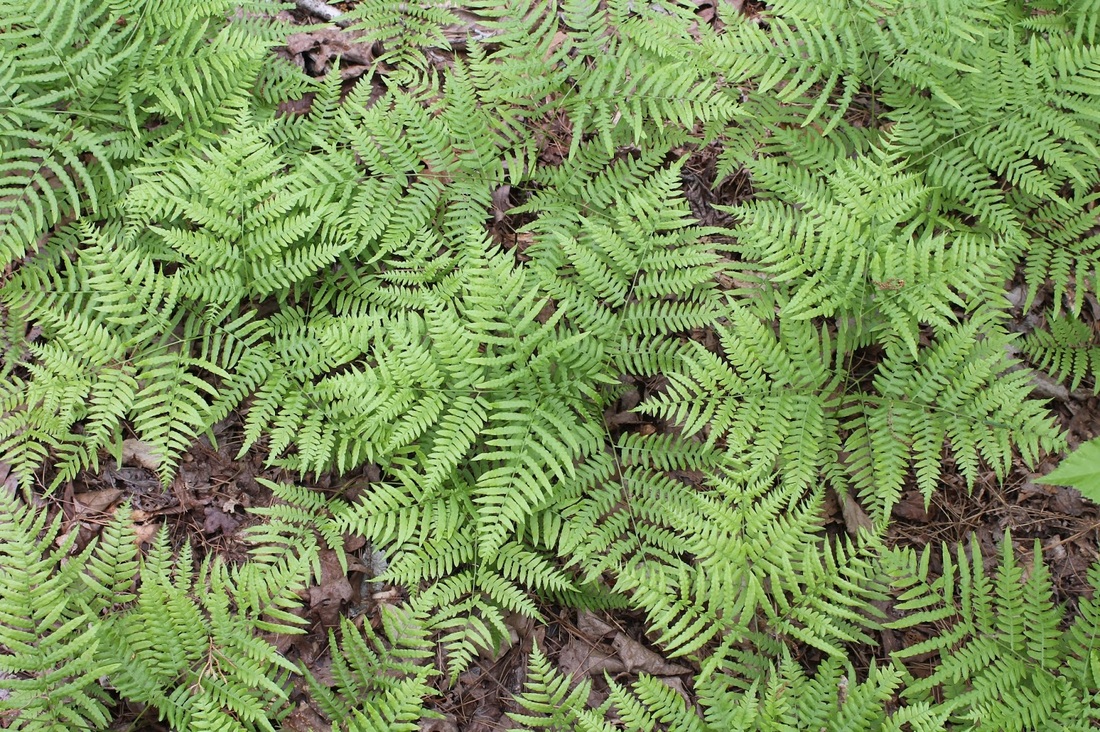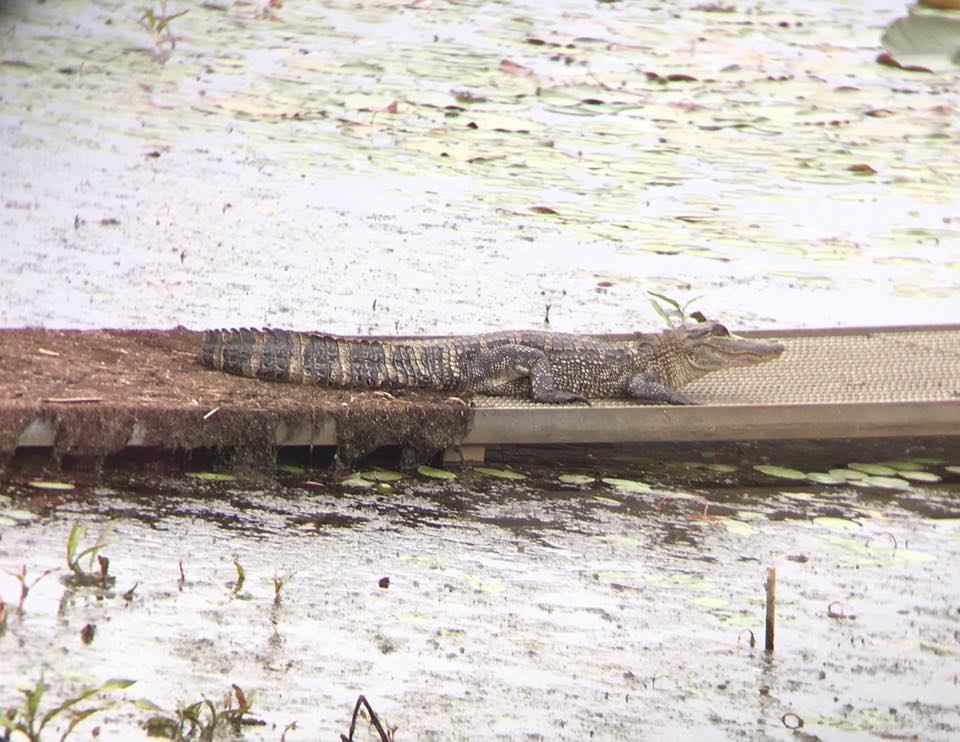|
The spring field meeting of the Oklahoma Academy of Sciences was at Beaver’s Bend State Park in extreme southeastern Oklahoma, very close to Texas and Arkansas. In addition to the trip leader (botanist Gloria Caddell of the University of Central Oklahoma), myself, and a couple of other professors (Bill Caire and Clark Ovrebo), we had four students: David Batton (Grayson Co. Community College), Taylor Walker and Gokul Mariventhan (Southeastern Oklahoma State University), and Tracy Holshouser (University of Central Oklahoma). It was a soft, overcast day with fresh light green foliage all around us. The hickory buds were just beginning to open. On our various botany hikes, we recognized at least fifty species, and there were many more we overlooked. The canopy trees, much taller than in the central Oklahoma forests, were pines, sweetgums, oaks, and hickories. Lots of hophornbeam and sugar maple grew as understory trees. The last spring ephemerals were finishing up. Perhaps the most striking flowers were the Dodecatheon meadia shooting stars. One of the students, David Batton, works for the Choctaw Nation and is familiar with some plants of cultural importance to his tribe, as they are also to mine (the Cherokee tribe). We found yaupon holly bushes, which many Eastern tribes used to make the “black drink” for ceremonial purposes (we don’t recommend its recreational use; there is a reason it is calledIlex vomitoria), and one bois-d’arc tree, with strong flexible wood that is superior to others for making bows. We also found river cane, the stems of which are useful to many tribes for making arrows and blow darts. Our visual senses were satiated with beauty but we used our other senses also. Monarda russeliana leaves had the beautiful fragrance associated with the beebalm genus, and on this trip, as on every other, I never fail to get the students to eat the young shoots of Smilax greenbriar. The students were very observant. One student noticed that several different plant species, including Oxalis violacea andMonarda russeliana, had red pigment on the undersides of the leaves, which helps plants in deep shade absorb more light for photosynthesis. Another student noticed that the bracken fern leaves had a fractal pattern to them. But the most observant of us was Clark, who showed us that the easily-overlooked whitish scum on decomposing oak logs was not simply fungal hyphae, as I had assumed, but actual microscopic reproductive structures: the perithecia of the ascomycete Biscogniauxia atropunctata. The natural world reveals wonders to anyone who stops to look closely and ask questions.
There were also zoology field trips. Students and faculty visited the Little River National Wildlife Refuge and Red Slough Wildlife Management Area in McCurtain County. They observed 82 species of birds, as well as herps and mammals. Highlights included American Bitterns at Duck Slough, Anhingas at Red Slough, and Prothonotary, Hooded, and Black-and-white Warblers at Little River NWR. Photograph by Chris Butler.
4 Comments
6/12/2024 02:52:29 pm
The canopy trees, much taller than in the central oklahoma forests, were pines, sweetgums, oaks, and hickories. Lots of hophornbeam and sugar maple grew as understory trees. Thank you for making this such an awesome post!
Reply
7/4/2024 02:05:49 pm
This is very informative and intersting for those who are interested in blogging field.
Reply
7/5/2024 01:00:25 pm
The shelter trees, a lot taller than in the focal Oklahoma timberlands, were pines, sweetgums, oaks, and hickories. Bunches of hophornbeam and sugar maple developed as understory trees.
Reply
Leave a Reply. |
Archives
October 2018
Categories |
